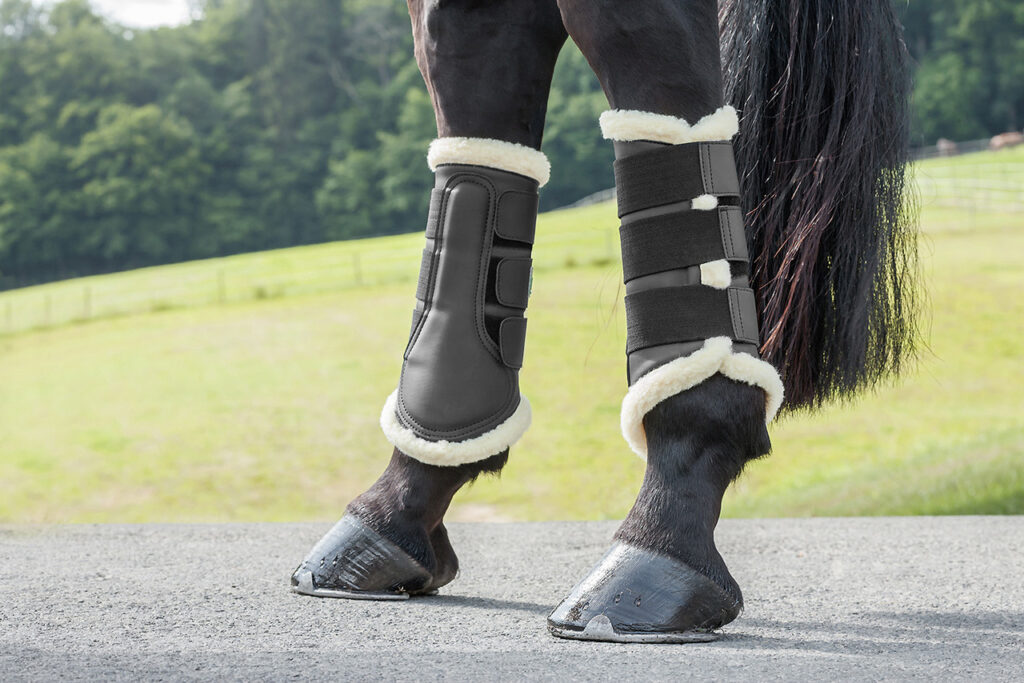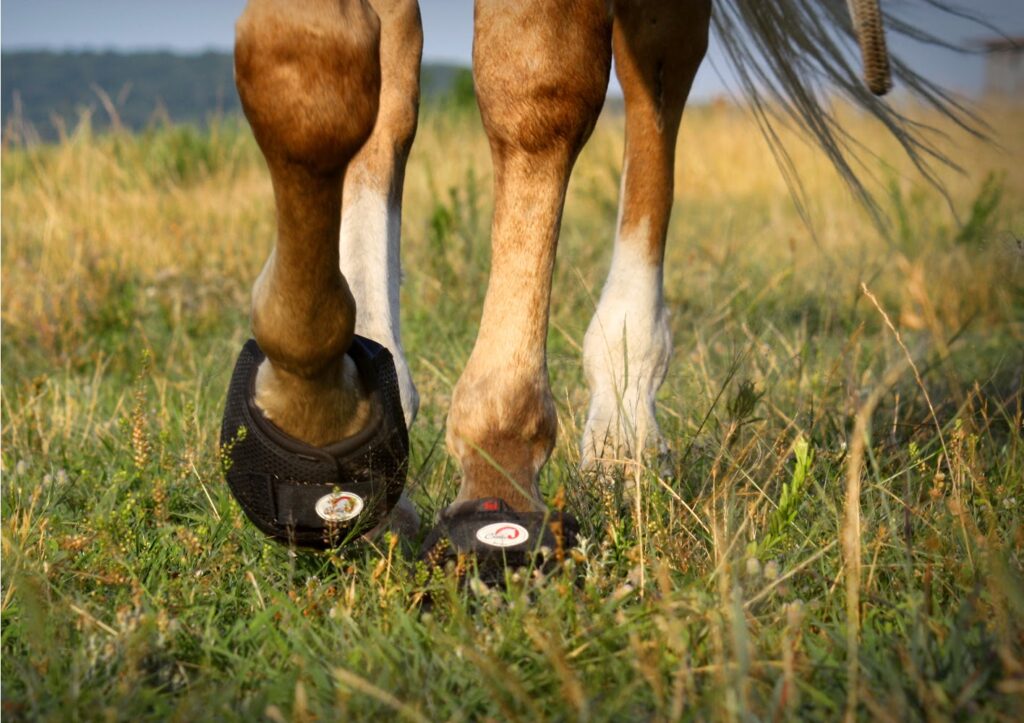Table of Contents
ToggleIntroduction

Miniature horses, cherished for their pint-sized charm and amiable nature, have captured the hearts of equestrians and enthusiasts alike. Whether they are companions, therapy animals, or participants in competitive events, these diminutive equines require special care to ensure their well-being. Hoof Boots For Miniature Horses, One essential aspect of their maintenance involves addressing the unique needs of their hooves. In recent years, hoof boots have emerged as a valuable accessory in the realm of miniature horse care.
Anatomy Of Miniature Horse Hooves
Miniature horse hooves exhibit distinctive features that set them apart from their larger counterparts, necessitating a nuanced understanding of their anatomy for effective care.
Unique Features of Miniature Horse Hooves
Proportionality: Miniature horses, known for their diminutive size, possess hooves that are proportionally smaller compared to standard horse breeds. The reduced size brings forth a unique set of challenges and considerations in hoof care.
Conciseness: The compact nature of miniature horse hooves emphasizes the importance of concise structures. The sole, frog, and hoof walls are intricately designed to support the horse’s weight efficiently while maintaining a well-balanced form.
Sturdy Composition: Despite their diminutive size, miniature horse hooves are crafted from durable materials. The keratinous hoof wall, which protects the inner structures, remains sturdy and resilient, requiring specialized care to ensure its health and integrity.
Differences from Standard Horse Hooves
Size Discrepancies: The most apparent difference lies in the size of the hooves. Miniature horse hooves are significantly smaller, and their diminutive stature influences the distribution of weight and impact forces.
Proportionate Frog: The frog, a critical structure in weight distribution and shock absorption, is proportionate to the smaller hoof size. Understanding the role of the frog in miniature horse hooves is essential for maintaining proper hoof function.
Compact Heel: Miniature horse hooves often have a more compact heel compared to standard horses. This compactness affects the distribution of weight and the horse’s overall balance, requiring specific attention during trimming and care.
The Need For Hoof Protection
Miniature horses, though small in stature, encounter unique challenges in different environments that necessitate careful consideration of their hoof health. Hoof protection becomes a crucial element in addressing these challenges and ensuring the overall well-being of these pint-sized equine companions.
Challenges Miniature Horses Face in Various Environments
Uneven Surfaces: Miniature horses may traverse a variety of terrains, from grassy pastures to rocky surfaces. Their small hooves, while adept at navigating some environments, can face difficulties on uneven or abrasive surfaces, increasing the risk of bruising, abrasions, or injury.
Adverse Weather Conditions: Harsh weather conditions, such as wet and muddy environments, pose challenges for miniature horse hooves. Prolonged exposure to moisture can lead to softening of the hooves, making them more susceptible to issues like thrush and infections.
Intensive Activities: Whether engaging in therapeutic activities, participating in shows, or being involved in recreational exercises, miniature horses are subject to wear and tear on their hooves. The intensity of certain activities can contribute to the need for additional protection.
The Role of Hoof Protection in Preventing Injuries and Promoting Health

Shock Absorption: Hoof protection, particularly in the form of hoof boots, plays a vital role in absorbing shock during movement. This is crucial for minimizing the impact on miniature horse hooves and reducing the risk of injuries related to repetitive strain or concussive forces.
Preventing Excessive Wear: Miniature horses, despite their small size, can be quite active. Hoof protection helps mitigate excessive wear and tear on the hooves, ensuring that they maintain proper length and structure for optimal function.
Supporting Hoof Health: Hoof protection contributes to overall hoof health by shielding the hooves from external elements, preventing infections, and promoting a healthy environment. This is especially important for miniature horses with hooves that may be more susceptible to certain conditions.
Benefits Of Hoof Boots
Hoof boots for miniature horses offer a myriad of advantages, contributing significantly to the well-being and performance of these diminutive equines. From supporting natural movement to promoting healthy hoof development and providing versatility across various activities, hoof boots have become an indispensable accessory for conscientious caretakers.
Support for Natural Movement
Flexibility and Mobility: Hoof boots provide miniature horses with the freedom to move naturally, allowing their hooves to flex and expand with each step. This flexibility mimics the movement of a bare hoof, promoting a more natural and comfortable gait.
Enhanced Traction: Hoof boots often come equipped with treads or gripping surfaces that improve traction. This feature is especially beneficial on slippery or uneven terrains, enabling miniature horses to navigate with confidence and reducing the risk of slips or falls.
Encouragement of Proper Biomechanics: By supporting the natural movement of the hooves, hoof boots contribute to proper biomechanics. This, in turn, helps prevent strain on joints and muscles, fostering a healthier overall posture and movement pattern.
Promotion of Healthy Hoof Development

Protection Against Excessive Wear: Miniature horses, known for their active nature, can experience excessive wear on their hooves. Hoof boots act as a protective barrier, mitigating the impact of abrasive surfaces and preventing overwear that could compromise the structural integrity of the hooves.
Shock Absorption: The shock-absorbing qualities of hoof boots play a crucial role in safeguarding miniature horses from concussive forces. This is particularly important in preventing conditions like laminitis or founder, which can be exacerbated by repeated impact.
Maintaining Optimal Hoof Length: Hoof boots contribute to maintaining an optimal hoof length by preventing uneven wear. This is essential for proper weight distribution and balance, reducing the likelihood of developing hoof-related issues.
Versatility in Different Activities (e.g., Leisure, Therapy, Competition)
Leisure Activities: Whether strolling through pastures or enjoying leisurely walks, hoof boots provide comfort and protection. They allow miniature horses to engage in low-impact activities without the risk of discomfort or injury.
Therapeutic Use: Hoof boots are instrumental in therapeutic interventions, offering support to horses recovering from injuries or dealing with chronic conditions. The ability to customize the fit and level of support makes hoof boots a valuable tool in rehabilitation efforts.
Competition and Performance: Miniature horses participating in various competitions, from agility events to shows, benefit from the versatility of hoof boots. These boots provide the necessary traction, support, and protection required for optimal performance without impeding the horse’s natural movement.
Conclusion
The use of hoof boots for miniature horses emerges as a thoughtful and practical solution in the realm of equine care. As we’ve explored the various facets of these innovative accessories, it becomes evident that hoof boots offer a versatile and humane alternative to traditional horseshoes, catering specifically to the unique needs of our pint-sized equine companions.







